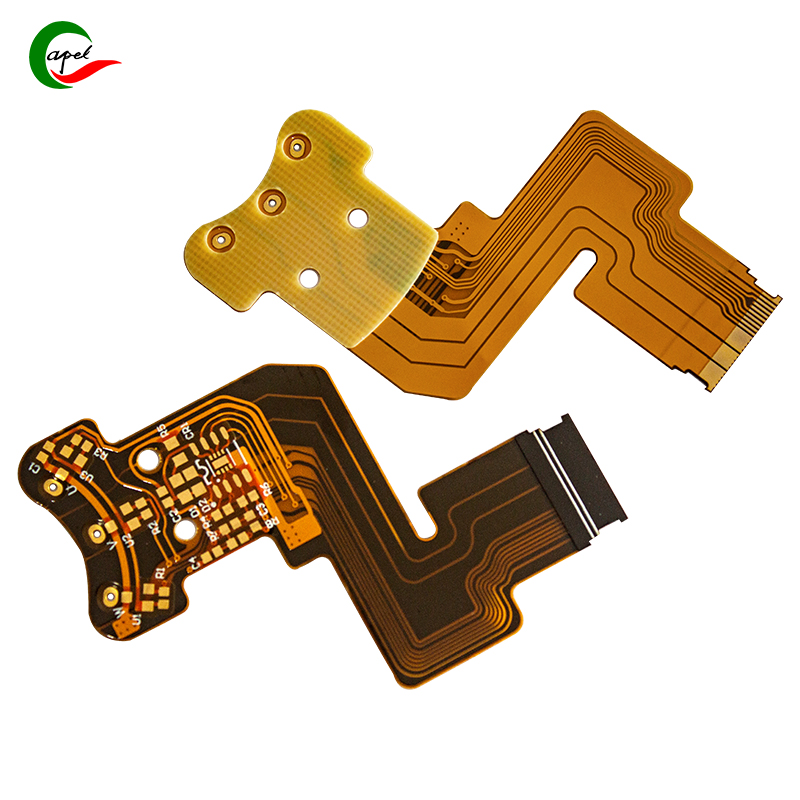In this blog post, we will explore the folding and bending capabilities of flexible circuit boards and the various applications that benefit from this unique feature.
Flexible circuit boards, also known as flex circuits, have gained tremendous popularity in recent years due to their unique ability to bend and fold to fit a variety of electronic devices. The circuits are made from flexible plastic substrates that can be twisted, rolled and shaped into complex three-dimensional structures.
To understand the folding and bending capabilities of flexible circuit boards, you must first grasp the concept of their construction. Flex circuits are typically made from layers of polyimide, a flexible plastic, with fine copper conductive traces. These layers are then bonded together using heat press and adhesive materials to form a flexible and durable circuit board. The flexible nature of these boards allows them to be bent, folded and twisted without damaging electrical components.
One of the main advantages of flexible circuit boards is their ability to accommodate different form factors. Unlike traditional rigid PCBs, which are limited to flat and rectangular shapes, flexible circuits can be shaped into a variety of three-dimensional geometries. This flexibility opens up a world of possibilities for engineers and designers, allowing them to create electronic devices that can be bent, wrapped around corners or even integrated into textiles and fabrics.
The ability of flexible circuit boards to fold and bend makes them ideal for applications that require a compact and lightweight design. For example, in the field of medical devices, flexible circuits are used in implantable devices such as pacemakers and neurostimulators. These devices need to be flexible to conform to the contours of the human body while accurately delivering electrical signals or pulses. Flexible circuits enable the miniaturization of these devices and ensure they can be implanted with minimal invasiveness.
Another area where flexible circuit boards are widely used is consumer electronics. From smartphones and wearables to flexible displays and foldable devices, flexible circuits enable the design of innovative and portable devices. Take the emerging trend of foldable smartphones. The devices feature flexible screens that fold in half, transforming from compact phones into tablet-sized displays. Flexible circuits play a vital role in enabling this foldable design by providing the necessary electrical connections that can withstand repeated folding and unfolding.
The automotive industry is another industry that uses flexible circuit boards extensively. With the rise of electric vehicles (EVs) and autonomous driving technologies, there is a growing demand for flexible electronics that can withstand the harsh operating conditions of the automotive environment. Flexible circuits can be integrated into various components of electric vehicles, including dashboards, lighting systems, and even battery packs. The ability to bend and fold these circuits enables efficient packaging and space utilization within the limited confines of the vehicle.
In addition to these industries, flexible circuit boards are used in aerospace, military, and even consumer products. In aerospace, flexible circuits are used in aircraft avionics, where they can bend and twist to fit into tight spaces within aircraft cockpits. In the military, flexible circuits are used in wearable electronics, allowing soldiers to have lightweight and durable communications devices on the battlefield. Even in everyday consumer products such as clothing and accessories, flexible circuits can be integrated to add unique functional electronic features.
In summary, the ability of flexible circuit boards to fold and bend opens up a world of possibilities in electronics. Its unique structure allows it to be formed into a variety of three-dimensional configurations, making it suitable for applications requiring a compact and lightweight design. From medical devices to consumer electronics and automotive systems, flexible circuits have become indispensable components, facilitating the development of innovative and versatile electronic products. As technology continues to advance, we can expect flexible circuits to play a more prominent role in shaping the future of electronics.
Post time: Sep-21-2023
Back








